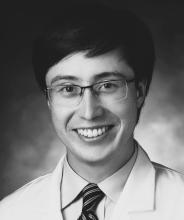Investing in research, focused on patients
We invest in outstanding scientific research and innovative research models to expedite promising therapies to patients.
This is a pivotal time in the history of the amyloidosis, with the approval of three drugs for ATTR in 2019 and a number of new therapies on the horizon. Increasing the level of support is essential for research in these underserved diseases. Researchers, clinicians and partners in the biotech and pharmaceutical industries are working on the development of therapies that are changing the landscape and improving the outlook for patients.
The Amyloidosis Foundation is committed to serving patient needs by supporting research and providing annual grants for junior research scientists whose research targets the challenges in the field of amyloidosis.
Grant Programs
For over a decade, the Amyloidosis Foundation grant program has supported outstanding research in all forms of systemic amyloidosis. Through our research program, we encourage, promote and invest in the medical study and exploration of amyloidosis diseases.
Research Grants
Candidates will have completed their doctoral studies or clinical fellowship within ten years prior to application. Grants are awarded for one year according to the award conditions and reporting guidelines.
On request, a second year of funding will be considered, pending a review of the research progress and as foundation funding permits.
Grant Programs
Travel Grants
Travel Grants
The foundation is dedicated to encouraging young scientists that show an interest in amyloidosis research, by providing travel grants to physicians and researchers who have completed their medical doctorate or fellowship within the past 10 years. These grants enable participation in the bi-annual International Amyloidosis Symposium.
Grand Rounds
The Amyloidosis Foundation has a very successful Grand Rounds program, as part of our commitment to raise awareness of the amyloidosis diseases. We will sponsor an expert in amyloidosis to speak to doctors and medical staff regarding the diagnostic tools, clinical protocols and treatment therapies that are currently available.
Our speakers are among the most knowledgeable specialists in the U.S. and are involved in amyloidosis research and patient care. The Amyloidosis Foundation will arrange for the speaker and will cover all travel expenses and honoraria.
Physicians who are available for our Grand Rounds Program include:
- Adam Cohen, MD – University of Pennsylvania – Hematology
- Raymond Comenzo, MD – Tufts Medical Center – Hematology
- Rodney Falk, MD – Brigham & Women’s Hospital – Cardiology
- Morie Gertz, MD – Mayo Clinic, Rochester – Hematology
- Martha Grogan, MD – Mayo Clinic, Rochester – Cardiology
- James Hoffman, MD – University of Miami – Hematology
- Robert Kyle, MD – Mayo Clinic, Rochester – Hematology
- Heather Landau, MD – Memorial Sloan-Kettering – Hematology
- Mathew Maurer, MD – Columbia University Medical Ctr. – Cardiology
- Raymond Migrino MD – Phoenix Veterans Administration – Cardiology
- Vaishali Sanchorawala, MD – Boston University Amyloid Program – Hematology
- Adam Segal, MD – Brigham & Women’s Hospital – Nephrology
- Marc Semigran, MD – Massachusetts General – Cardiology
- Brendan Weiss, MD – University of Pennsylvania – Hematology
- Ron Witteles, MD – Stanford University Medical Center – Cardiology
- Jeffrey Zonder, MD – Karmanos Cancer Center – Hematology
If you have an interest in having one of our speakers give Grand Rounds on amyloidosis at your medical facility, please email us at [email protected] or call 248-922-9610.
Meet Our Grant Awardees
We are proud to feature our annual grant recipients, whose research targets the challenges in the field of amyloidosis.

Michael S. Hughes, MD
Preclinical Efficacy and Activity of the 11-1F4 CAR Macrophage in AL Amyloidosis
Amyloidosis Foundation Research Grant, 2025
Columbia University New York, NY

Emre Karayol, MD
Identification of Novel Therapeutic Targets within the Proteostasis Network in AL Amyloidosis - Follow Up Grant Award
Amyloidosis Foundation Research Grant, 2025
Brigham and Womens Hospital, Boston, MA

Taxiarchia Kourelis, MD
Development and validation of a human organoid model for renal AL Amyloidosis
Amyloidosis Foundation Research Grant, 2025
Mayo Clinic, Rochester, NY

Emre Karayol, MD
Identification of Novel Therapeutic Targets within the Proteostasis Network in AL Amyloidosis
Amyloidosis Foundation Research Grant, 2024
Brigham and Womens Hospital, Boston, MA

Joban Vaishnav, MD
Deep Clinical and Molecular Phenotyping of Transthyretin Amyloid Cardiomyopathy
Amyloidosis Foundation Research Grant, 2024
Johns Hopkins University, Baltimore, MD

Shilpa Vijayakumar, MD
Molecular Imaging of Myocardial Fibrosis in Transthyretin Cardiac Amyloidosis
The Charlotte L. Haffner Memorial Research Grant, 2023
Brigham and Women's Hospital, MA

Oshrat Rokah, MD
Drug Repurposing for AL Amyloidosis: Exploring New Mechanisms
Amyloidosis Foundation Research Grant, 2023
Assuta Medical Centers Hospital, Tel Aviv, Israel

K. H. Vincent Lau, MD
Evaluating Plasma Neurofilament Light Chain as an Early Biomarker for Polyneuropathy in V122I Hereditary Transthyretin Amyloidosis
Amyloidosis Foundation Research Grant, 2022
Boston University, MA

Zainul S. Hasanali, MD, PhD
Targeting amyloidosis through study of calcium dependent endoplasmic reticulum resident protein folding chaperones and their effect on antibody production in plasma cells
Amyloidosis Foundation Research Grant, 2022
University of Pennsylvania, PA

Taxiarchis Kouelis, MD
Characterizing the Role of the Tissue Immunome in the Pathogenesis of Renal AL Amyloidosis
Amyloidosis Foundation Research Grant, 2022
Mayo Clinic, Rochester, MN

Timothy Poterucha, MD
Prospective Identification of Transthyretin Cardiac Amyloidosis Using Deep Learning
Amyloidosis Foundation David C. Seldin Memorial Research Grant, 2021
Milstein Hospital, Columbia University, New York, NY
Maria Moscvin, MD
Targeting Free Light Chain Secretion as a Novel Therapeutic Strategy in AL Amyloidosis
Amyloidosis Foundation Donald C. Brockman Memorial Research Grant, 2021
Brigham and Women's Hospital, Boston, MA

Susan Bal, MBBS
Understanding the Immune Microenvironment of Light Chain (AL) Amyloidosis
Amyloidosis Foundation David Seldin, MD, PhD Memorial Research Grant, 2020
University of Alabama, Birmingham, AL

Renato Polimanti, PhD
Dissecting the role of the genetically-determined TTR
Amyloidosis Foundation Research Grant, 2020
Yale University School of Medicine

Mark Ranek, PhD
Chip'n Away at Cardiac Amyloidosis with PKG
Amyloidosis Foundation Donald C. Brockman Memorial Research Grant, 2020
Johns Hopkins University, Baltimore, MD

Siyang Leng - MD
Quality of Care and Disparities in Myeloma Associated Amyloidosis
Amyloidosis Foundation Donald C. Brockman Memorial Research Grant, 2019
Columbia University Medical Center, New York

Amandeep Godara - MD
Development of Antibodies for Elimination of Serum Free Light Chains
Amyloidosis Foundation David Seldin, MD, PhD Memorial Research Grant, 2019
Tufts Medical Center, Boston, MA

Celia Torres Arancivia - PhD
Age-Related Cardiac Amyloid Disease (ATTRwt)
Amyloidosis Foundation David Seldin, MD, PhD Memorial Research Grant, 2018
Boston University Amyloidosis Center

Luke Berchowitz - PhD
A New Platform to Discover the Genes Involved in Amyloid Formation
Amyloidosis Foundation Donald C. Brockman Memorial Research Grant, 2018
Columbia University Medical Center, New York

Surbhi Sidana - MBBS
Understanding the Composition and Mechanism of Amyloidogeneis in Light Chain Amyloidosis
Amyloidosis Foundation Research Grant, 2018
Mayo Clinic, Medicine Division: Hematology

Matteo de Rosa - PhD
A New Route to the Development of Therapeutics
Amyloidosis Foundation Research Grant, 2018
National Research Council, Italy, Medicine Division: X-Ray Crystallography & Structure-Based Drug Design

Alexandra Silva - B.S, Chemistry, PhD
Assessing Efficiencies in Machado-Joseph Disease (MJD) Therapies
Amyloidosis Foundation Research Grant, 2018
Instituto de Biologia Celular e Molecular, Portugal, Medicine Division: Biomolecular Structure and Function Group

Mario Nuvolone - MD, PhD
Investigating New Therapies to Treat AL Amyloidosis
Amyloidosis Foundation Research Grant, 2018
University of Pavia, Italy, Medicine Division: Amyloidosis Research and Treatment Center

Emily Martin - PhD
A Method to Predict Amyloid Risk in Patients
Amyloidosis Foundation Donald C. Brockman Memorial Research Grant, 2017
University of Tennessee Medical Center, Medicine Division: Amyloidosis
It is estimated that approximately 15% of patients with multiple myeloma will also develop symptomatic light chain amyloidosis in the course of their disease. Since there are now several new amyloid-clearing and preventing drugs in development, it would be beneficial to identify these patients before severe amyloid forms and organ failure occurs so that they can benefit from these new treatments.
This project will evaluate a novel test for identifying patients with a diagnosis of multiple myeloma that are at risk of developing light chain amyloidosis. We will study light chain proteins, which have been isolated from patients’ urine, for their ability to bind to synthetic amyloid fibrils. Our data suggest that light chain proteins from amyloidosis patients show enhanced binding to these fibrils as compared to those from patients with multiple myeloma.
With the help of the Amyloidosis Foundation, we will now focus on further exploring this observation and developing a simple test that can measure the amyloidogenic potential of light chain proteins and, thus, the risk of developing amyloid before symptoms of the disease appear in patients.

Lorena Saelices - PhD
A Novel Strategy for the Treatment of ATTR
Amyloidosis Foundation David Seldin, MD, PhD Memorial Research Grant, 2017
Regents of the University of California, Los Angeles
Transthyretin (TTR) is a plasma protein whose abnormal amyloid aggregation causes wild-type amyloidosis and some cases of hereditary amyloidosis, referred as ATTR. TTR amyloid deposits are found in virtually every organ of ATTR patients and are made of unbranched fibrils that accumulate mostly between cells.
In our previous work, we identified the two segments of TTR that are crucial for amyloid fibril formation. We designed and characterized two specific small peptides that block TTR fibril formation by interacting with these two segments in vitro.
The 2016 Amyloidosis Foundation Research Grant allowed us to evaluate our peptide inhibitors in a ATTR model of the fruit fly, Drosophila melanogaster. The results show that the treatment with our peptide inhibitors improves motor skills and reduces TTR insoluble deposition.
With the support of the 2017 Amyloidosis Foundation Grant, we aim to assess the combinatory effect of our peptide inhibitors and diflunisal, a compound that was tested in clinical trials for the treatment of TTR amyloidosis. Our research may represent a novel strategy for the treatment of ATTR.

Petros Moustardas - PhD
Novel Therapy for Renal Amyloidosis
Amyloidosis Foundation Research Grant, 2017
Linkoping University, Sweden, Medicine Division: Microbiology & Molecular Medicine
Living cells have a sophisticated quality control system in the Endoplasmic Reticulum (ER) to ensure that the proteins they produce have proper shape and function. When the ER folding capacity is overwhelmed, homeostasis is disturbed, a condition known as ER stress.
Amyloidosis involves the accumulation of insoluble, misfolded proteins in the afflicted tissues. Thus, we believe that the deregulated function of ER components is involved in the underlying pathology. ERdj5 is a chaperone protein resident in the ER and an essential component of the protein quality control system. Our research has revealed that mice lacking ERdj5 develop spontaneous renal amyloidosis.
We are thankful for the generous support from the Amyloidosis Foundation, this will allow us further exploration of this finding and investigate the pathogenetic mechanisms involved in the development of the observed phenotype. This will also lead to a better understanding of the relation between ER function and amyloidosis and has the potential to generate novel, not suspected thus far, therapeutic targets of clinical significance.

Carolina Lemos - PhD
New Biomarkers for FAP
Amyloidosis Foundation Research Grant, 2017
University of Porto, Portugal, Medicine Division: Molecular Biology
Phenotypic variability on Familial amyloid polyneuropathy (FAP ATTRV30M), a hereditary systemic amyloidosis due to a gene mutation, has been a most intriguing feature and the object of several studies from our group and others.
Our research has been centered mainly in the study of age-at-onset anticipation mechanisms and the search for genetic modifiers of the disease, in a large group of Portuguese families. Although some genetic factors associated with phenotypic variability have been found, age-at-onset variability is still not totally understood.
Our aim is to assess differences in gene expression levels, transcription and regulation in discordant relative-pairs for age-at-onset, to identify potential epigenetic modifiers of age-at-onset.
We expect that this project, with the support of Amyloidosis Foundation, may contribute to elucidate some of these mechanisms, which may lead to the development of new biomarkers and to a better follow-up of families at risk.

Heather Landau - MD
Gene Expression Changes in AL amyloidosis
Amyloidosis Foundation - Donald C. Brockman Memorial Research Grant, 2015
Memorial Sloan Kettering Cancer Center, Medicine Division: Hematology
Amyloidosis is caused by the expansion of abnormal plasma cells that produce abnormal proteins that accumulate in tissues to cause end-organ damage. To date, mutations in amyloid-forming plasma cells and their resulting consequences on the genes expressed have been poorly characterized.
This grant from the Amyloidosis Foundation will allow us to perform the first large-scale characterization of the mutations and gene expression changes in AL amyloidosis by evaluating patient’s plasma cells at diagnosis and following treatment. We expect such studies to allow us to identify genes that contribute to the development of disease, predict treatment responses, and identify new therapeutic targets. This study will play an important role in future development of a cure for amyloidosis.

Michael Rosenzweig - MD
Cell Therapy for AL amyloidosis
Amyloidosis Foundation - David Seldin, MD, PhD Memorial Research Grant, 2015
City of Hope, Medicine Division: Hematology & Hematopoietic Cell Transplantation
Amyloid light-chain (AL) amyloidosis is a rare blood disease that is treatable but often fatal. With the help of the Amyloidosis Foundation, we plan to develop a new treatment for AL amyloidosis by genetically engineering a patient's own immune system to recognize and kill the abnormal blood cells when reintroduced into the body.
We will evaluate blood cells in patients with AL for expression of a specific protein that could be targeted by this approach. Once the target is identified, genetically engineered cells will be generated and tested in the laboratory. The ultimate goal is developing this therapy for clinical trials in patients with AL amyloidosis.

Lorena Saelices - PhD
New Strategy for TTR amyloidosis
Amyloidosis Foundation - Research Grant, 2015
Regents of the University of California
Treatments for systemic transthyretin amyloidosis have been held back by lack of information on the structures and causes of aggregation of the amyloid fibers formed by transthyretin (TTR). In previous work, we identified two protein segments involved in TTR aggregation, and developed a novel strategy to inhibit the process by small non-natural peptides.
Based on the amyloid structure of the aggregation-driving segments, we designed two peptide inhibitors that hindered TTR aggregation. With the support of the Amyloidosis Foundation in our research, these peptide inhibitors will be tested for their ability to halt fibril formation in the disease model of fruit flies. This new strategy will assist in providing successful therapies for TTR patients.

Clare-Louise Towse - MChem, MPhil, PhD
Trying to Inhibit Amyloid Formation
Amyloidosis Foundation - Research Grant, 2015
University of Washington, Medicine Division: Office of Research
The proteins involved in amyloid diseases share an intermediate state that forms before the insoluble fibril form found in diseased tissue. This intermediate can be prevented from forming the fibrils by adding peptides, designed by the Daggett lab, in vitro. Our grant from the Amyloidosis Foundation will help us build on these designs by placing them inside a larger protein to increase their structural stability, which in turn is linked to their ability to prevent fibril formation.
We will be optimizing the designed peptides within the protein using computational methods and, once optimized, these molecules will be chemically synthesized and tested for the potential to inhibit amyloid formation. Results from this study will hopefully prevent amyloid formation in the future and give hope to amyloidosis patients.

Guillermo A. Herrera - MD
Stem Cell Research
Amyloidosis Foundation - Research Grant, 2014
Louisiana State University, Medicine Division: Pathology
Kidney involvement and eventual kidney failure are common in amyloidosis. If the kidneys fail, the only options are dialysis and transplantation, both of which can cause significant complications. Today, amyloidosis is diagnosed earlier resulting in prolonged survival. The need for repairing damaged organs is obvious.
This grant from the Amyloidosis Foundation supports our research that investigates the use of stem cells administered intravenously to repair and heal damaged kidneys in an animal model. Stem cells are undifferentiated and can transform into specialized cell types. Results from this study will pave the way to use stem cells in human patients with amyloidosis to improve survival and quality of life.

Jennifer Kollmer - MD
Focusing on ATTR Polyneuropathy
Amyloidosis Foundation - Research Grant, 2014
University of Heidelberg, Medicine Division: Neuroradiology
A severe impairment of the peripheral nerves is one of the main manifestations in hereditary amyloidosis (ATTR). Our grant from the Amyloidosis Foundation aids our research in developing a new and highly sensitive diagnostic tool. The focus of this tool will be to:
1) Detect very early nerve damage in gene-carriers without symptoms (family members of patients who already present with symptomatic disease).
2) Monitor nerve lesions in patients with symptomatic amyloid polyneuropathy under treatment. Our study of participants will be done in different groups of disease severity. We will then perform a MRI of the lower limb peripheral nerves. This will help us find which patient has the highest sensitivity while we detect and define the peripheral nerve damage. We can then determine the stage of polyneuropathy for that patient.
This research will aid in providing earlier treatment for patients after initial diagnosis and in delivering successful therapies for patients with advanced disease.

Rockland L. Wiseman - PhD
New Strategies for Systemic Amyloid Diseases
Amyloidosis Foundation - Research Grant, 2014
The Scripps Research Institute – Department of Molecular & Experimental Medicine
The systemic amyloid diseases are a group of diseases caused by the build-up of unstable proteins that form toxic tangles in the blood. These tangles accumulate on organs such as the heart, gut, and kidney, leading to organ failure and ultimately to death. Currently, no treatment other than invasive surgery exists to treat the majority of these diseases, making systemic amyloid diseases a large, unmet medical need. We are developing new strategies to reduce the lethal accumulation of unstable proteins associated with systemic amyloid diseases by enhancing the natural, protective pathways that regulate the levels of unstable proteins in the blood.
With the help from the Amyloidosis Foundation grant, our research will aid in the establishment of this new strategy. We hope to demonstrate that a single therapeutic approach can be used to treat many different systemic amyloid diseases. Therefore, it may be possible in the future to use a single drug to broadly treat these devastating disorders.

Ping Zhou - MD, PhD
Off-the-Shelf Lambda Light Chain Knockdown Therapy
Amyloidosis Foundation - Research Grant, 2013
Tufts Medical Center, Medicine Division: Hematology-Oncology
The support of the Amyloidosis Foundation for our development and testing of a new type of treatment to suppress light chain production by plasma cells has been critical. With this support we have been able to establish that a single type of interfering RNA can be delivered into plasma cells with a profound and rapid effect on the production of light chains that form amyloid.
With the support of this grant we completed lambda light chain gene knockdown on human myeloma cell lines, patient plasma cells and xenograft animal model. The study in human multiple myeloma cell lines (ALMC-1 and ALMC-2) showed that knockdown of the λ light chain constant region IGLCCR causes rapid decrease of IGLC mRNA and λ light chain production in vitro, and activates the unfolded protein response (UPR) in plasma cells producing intact immunoglobulin with a significant up-regulation of terminal UPR and endoplasmic reticulum associated degradation (ERAD) genes (Blood 2014; 3(22):3440-51). The study in plasma cells from 19 AL patient marrow specimens showed that knockdown of IGLC led to a reduction of λ light chain mRNA that strongly correlated with decrease of intracellular LC protein and was also associated with increased caspase 3/7 activity in patient plasma cells producing intact Ig (e.g., IgG λ or IgA λ) ( Blood 2014 ,123(22):3440-51, Proceedings of XIVth ISA 2014). The secreted λ light chain in supernatants of si[IGLCCR] treated plasma cell cultures from bone marrow of AL patients was decreased by 48% to 75% in 3 representative specimens. We applied the one pool of si[IGLCCR] by means of electroporation delivery in vivo into subcutaneous ALMC-1 or ALMC-2 xenograft plasmacytomas in NOD/SCID mice. The median relative expression ratios (si[IGLCCR]/si[-]) of IGLC mRNA were 0.73 (range 0.17-0.97) in ALMC-1 xenograft plasmacytomas (9/12) and 0.37 in ALMC-2 xenograft plasmacytomas (2/2); the secretion of human λ light chain protein in the mice sera was decreased by 4% to 56% two days after IGLC knockdown in 6 mice.
As a result of the success of the work the Amyloidosis Foundation supported, we have initiated collaboration with a bioengineering laboratory that can produce nanoparticles for the delivery of interfering RNA into plasma cells. This collaboration would not have been possible without the instrumental effort of the foundation in supporting research into new therapies for amyloidosis. I, and my lab colleagues, are grateful for the start the Amyloidosis Foundation has given us.

Matt Wolfe - MD, PhD
Researching Cardiac Amyloidosis
Amyloidosis Foundation - Research Grant, 2013
University of Virginia, Medicine Division: Cardiology
My laboratory uses the fruit fly, Drosophila melanogaster, to model human cardiomyopathies and we are using this approach to develop new insights into cardiac amyloidosis. To accomplish this goal, we made transgenic flies that express either normal human transthyretin or a variant of transthyretin that occurs commonly in individuals who have cardiac amyloidosis. The transgenic flies that have a variant of transthyretin develop changes in muscle consistent with changes observed in human amyloidosis and have problems with the way it functions. We also measured cardiac function in the transgenic flies using a method that is similar to echocardiography in humans and found abnormalities. These exciting results suggest that we can use fly genetics to identify new molecules that may prevent or slow the progression of cardiac amyloidosis.
The Amyloidosis Foundation grant has been instrumental in supporting the research in my laboratory. Importantly, we have been able to conduct new studies and advance our understanding of cardiac amyloidosis. Moreover, the Amyloidosis Foundation award has provided resources that allowed us to develop new transgenic mice to complement our studies in flies. We have presented our scientific retreats at Duke University and look forward to future publications. On a personal note, I have a greater appreciation of the complexities of cardiac amyloidosis and the care required for individuals who have this disease.

Jennifer Ellis Ward - PhD
Exploring Ways to Treat Systemic Amyloidosis
Amyloidosis Foundation - Research Grant, 2012
Boston Medical Center, Medicine Division: Hematology-Oncology
My work, which began as a graduate student in Dr. David Seldin’s laboratory at Boston University School of Medicine, has been focused on developing models of AL (light chain) amyloidosis and using these models to test potential therapies. Now that there are effective treatments to stop or stabilize the production of the amyloidogenic protein, such as preventing the production of light chains by targeting the plasma cells, there still remains a burden of amyloid fibrils already deposited in the body. I developed a transgenic mouse that has an amyloidogenic human Lambda 6 Light Chain in its blood and deposits amyloid fibrils in the stomach with age. Tetracycline antibiotics (like doxycycline) have been shown to disrupt amyloid fibrils and prevent fibril formation in mice for transgenic for transthyretin (TTR) in Dr. Saraiva’s laboratory and in models of Alzheimer’s disease. I treated the young AL transgenic mice with doxycycline in their drinking water and observed that amyloid formation was prevented as they aged, dramatically so with the majority of the mice having no detectable amyloid deposits.
With the research grant from the Amyloidosis Foundation, we took the next step to see if doxycycline could disrupt existing amyloid deposits in aged transgenic mice. We did not observe the dramatic total reduction observed with the prevention studies in the young mice. This presented a new challenge to develop a method to quantitate the amount of amyloid in tissue to determine how much, if any, partial response was achieved and to expand that method to be higher throughput. The Congo-red based fluorescence assay developed is being validated with ex vivo tissue fibrils and being used to study the aggregation of different light chains, including Kappa and Lambda. This method was described in a poster at the XIV International Symposium on Amyloidosis in Indianapolis in 2014 and will be submitted as a manuscript for publication. This aspect of the project has been developed by a talented technician in the laboratory, Varuna Shibad, who will be pursuing a PhD to begin her research career.
Another question that I addressed with the support of this research grant was whether any of the other tetracycline derivative drugs were more effective than doxycycline at disrupting amyloid fibrils. Other antibiotics in the tetracycline family (such as minocycline) have different characteristics that affect their half-life in the blood or ability to get into tissues where amyloid deposits form. We are also interested in compounds derived from tetracyclines that do not have antibiotic activity, but may still disrupt amyloid fibrils, as these may have lesser side effects. We have tested one novel compound so far. Again, the challenge arose that we needed to develop better methods to quantitatively measure amyloid fibrils, especially in the presence of tetracycline drugs, which are fluorescent yellow. The data were also presented in a poster at the XIV International Symposium on Amyloidosis in Indianapolis. We are working to further understand the mechanism of fibril disruption with tetracyclines and are preparing this data for publication.
The grant from the Amyloidosis Foundation is very important as it is extremely difficult to get funding to study rare diseases, especially for scientists who are in the early stages of their career. Many of the traditional funding mechanisms to explore new, pilot projects have been eliminated. I am extremely grateful for the Amyloidosis Foundation’s support of junior researchers which has allowed me, as a basic scientist, to generate data for publication and future grant applications and continue exploring ways to treat systemic amyloidosis.
